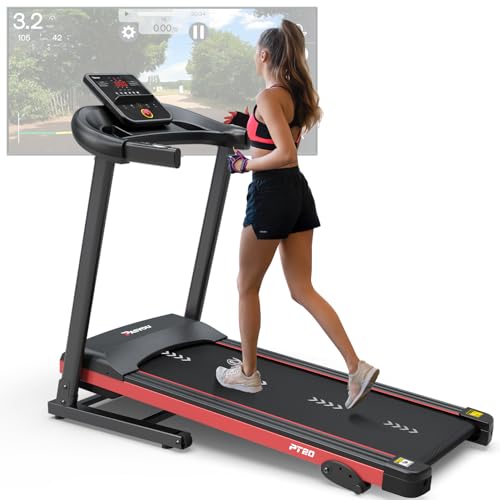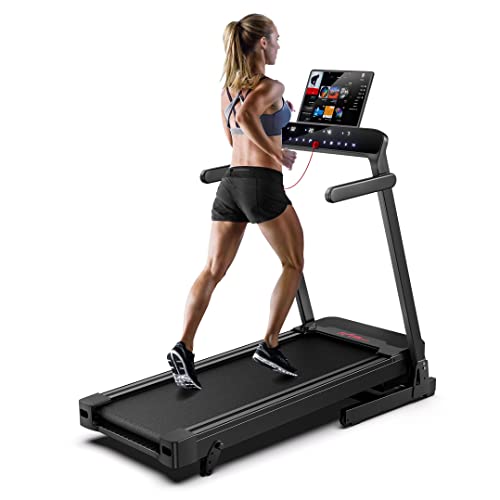treadmill incline benefits (simply click the next site)
 Walking at a treadmill incline can be a challenging exercise routine and burns more calories than regular treadmill walks. It is nevertheless important to monitor your fitness level and consult a doctor before attempting higher incline training levels.
Walking at a treadmill incline can be a challenging exercise routine and burns more calories than regular treadmill walks. It is nevertheless important to monitor your fitness level and consult a doctor before attempting higher incline training levels.
 The muscles that are targeted by incline treadmill running include your glutes and your quads and hamstrings. This makes it an excellent treadmill exercise to strengthen and tone the muscles and giving you a great cardio exercise.
The muscles that are targeted by incline treadmill running include your glutes and your quads and hamstrings. This makes it an excellent treadmill exercise to strengthen and tone the muscles and giving you a great cardio exercise.
Increased Calories Burned
The treadmill incline will boost your intensity by boosting your heart rate and burning more calories. In one study, researchers discovered that running on an incline increased the "energetic cost" of the exercise by 10 percent compared to flat running. This can increase the number of calories burnt during the course of a workout.
Treadmill incline workout targets various muscles from flat running or walking. The incline causes your quadriceps to work harder which results in increased strength and tone of the lower body. The incline can also help you increase your endurance for hiking and outdoor running workouts by forcing your body to adapt.
Based on your fitness level It's crucial to start slow and gradually increase the incline of your treadmill workout. Jumping into an exercise routine too quickly may cause you to push your body harder than it is capable of and can result in injuries like back discomfort or pain in your knees.
The incline of a treadmill increases the intensity of workouts because you are working against gravity. It is an excellent option for those who wants to improve their cardiorespiratory health without causing excessive impact on their joints. In fact, a study from 2013 revealed that walking on an incline can burn more calories per minute than regular treadmill walking at the same speed.
If you're new to incline walking or have any medical conditions, it's best to consult your doctor or physical therapist prior to you begin your treadmill incline exercise. To decrease the chance of injury, it's important to wear proper footwear, maintain a healthy posture and drink plenty of water.
It doesn't matter if you're a beginner runner or a seasoned veteran with years of experience, adding an incline to your treadmill workout will enable you to reach new heights. By gradually increasing the incline on your treadmill, you will gradually build muscle strength and endurance as well as prepare yourself for the challenges that comes with uneven outdoor terrain.
Tone of Muscle Tone
Incorporating treadmill walking on an incline into your workout can help you tone and strengthen the muscles in your hips, butt, legs and glutes. By walking or running on an inclined surface, your muscles will have to be more efficient in propelling you forward. This also produces more calories than running at a flat surface. Running or walking on an inclined surface can increase your endurance and cardiovascular fitness, as it makes your heart work harder to pump blood to the working muscles. If you're preparing for a race, or an event that requires mountains or hills or mountains, then using the incline feature of your treadmill will simulate these conditions and aid in your training.
If you're a novice to walking at an incline, it's recommended you start with a low level of incline (around 1 or 2) and gradually increase the gradual incline as your body becomes used to the activity. This will lower the chance of injury, and ensure that you are able to comfortably complete the exercise without putting too much stress on your muscles or joints.
As you become more comfortable walking on incline it is possible to include interval training into your workouts. This will make your workouts more challenging and interesting while also helping you to avoid injuries. Try alternating periods of a higher incline with periods of a lower or flat incline. For example, you could walk at a 2% incline for 30 seconds and then some minutes of flat or walking with a lower incline.
Treadmill incline-walking is an excellent alternative to outdoor running, as it offers the same cardiorespiratory benefits, while minimizing the impact on your joints. In addition, treadmill walking on an incline can focus on the muscles in your back more effectively than squats, while still burning calories and enhancing your balance and posture.
Although incline walking is a good way to build your cardiorespiratory endurance, it's important that you continue to include other types of exercise as well, such as strength training and interval training. Include a variety of exercises to keep them interesting and fun. This will keep you motivated to exercise regularly.
Increased Endurance
Incorporating an incline-based training routine into your treadmill workouts increases your endurance by mimicking the terrain of nature and triggering more muscles, particularly the calves and quads. The higher incline also raises the metabolic cost of your workout which means that you'll require more energy to complete the exercise. This makes it more difficult. This will stop your body from becoming accustomed to the same routine, thereby slowing your progress or stalling.
Increasing the incline of your treadmill workout is an excellent method to spice up your fitness regimen. Interval training and a variety of workouts can keep your body energized and push it to the limit. The incline of a treadmill challenges your core muscles, and also strengthens your knees and ankles in a way that is different from walking or running on flat.
If you're new to incline exercises begin by working at a lower level and gradually progress to a higher one. If you jump into a higher incline too quickly could cause your joints and muscles to overwork and put you at risk of injury.
For more experienced runners and hikers an incline of a higher degree on your treadmill can help you prepare for outdoor terrain or rocky terrain. You can build the endurance required for these types of workouts by incorporating a treadmill incline. This won't cause joint pain or strain.
Be sure to use the correct form when adding an increase in your treadmill exercise. Maintaining a good posture, looking forward and landing on the balls of your feet will ensure that you're engaging your leg muscles as much as is possible while exercising. Stretch your legs following the exercise, to prevent tight and sore muscles.
The benefits of an under bed treadmill with incline with an incline are numerous and can make your workouts more enjoyable and more effective. But, it's crucial to monitor your heart rate and remain within your range of target when you're working out on an incline to avoid overexerting. It's also essential to have a quality treadmill with incline uk that is comfortable, with an incline feature.
Reduced Joint Impact
You can reap the benefits of cardiovascular workout without putting as much stress on your joints by increasing your treadmill's incline. A slight slope can help reduce the strain on your ankles and knees by stimulating different muscles. An incline on the treadmill is an excellent method to tone your muscles, and still be able to complete the cardio workout you require.
If you're new to training at an incline, you should always start off slowly and gradually increase your incline until you reach the point at which you feel challenged by the workout but not so intense that it causes excessive joint strain. This will allow you to work up to a high intensity exercise with a low chance of injury.
The treadmill's incline is often used to create running or walking intervals. This can offer a cardiovascular challenge, while also targeting different muscle groups and improving balance. Geoffrey Burns is a biomechanics researcher and sports scientist at the University of Michigan. He suggests that you start out with an incline of 5% for walking intervals, and alternate between running for a minute and walking for a short period of time. This will help you strengthen the leg muscles that are most likely to be stretched, and improve your knee joint stability.
If you decide to walk or run on a steeper incline, make sure that the incline is just 10 percent, which is close to the natural gradient of the majority of hills. Running on a steeper slope puts additional strain on your lower body muscles, which can lead to injuries, such as patellar tendonitis and iliotibial band syndrome. This can cause tight quads and Hamstrings which can cause knee pain.
The incline on the treadmill simulates the process of climbing uphill. It requires your body to utilize more energy than when you exercise on a flat surface which increases your calorie burn and helps you build stronger legs. Using a space saving treadmill with incline incline can aid in losing weight by placing a greater emphasis on burning calories through aerobic exercise, rather than burning carbohydrates and fat.
